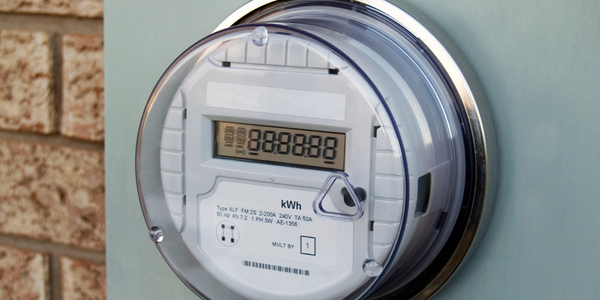Technology Category
- Platform as a Service (PaaS) - Application Development Platforms
- Sensors - Utility Meters
Applicable Industries
- Electrical Grids
- Retail
Applicable Functions
- Maintenance
Use Cases
- Personnel Tracking & Monitoring
- Retail Store Automation
About The Customer
The Source is Canada's largest tech retailer, with hundreds of locations across the country. Like many other companies in the retail industry, The Source has been grappling with the challenges posed by the rise of digital marketplaces, increasing customer expectations, and shifts in customer behavior. These challenges have necessitated improvements in operational efficiencies and customer experience. Additionally, The Source has been dealing with rising utility rates, leading to significant increases in utility costs over the past few years.
The Challenge
The Source, Canada's largest tech retailer, was facing a multitude of challenges common in the retail industry. The rise of digital marketplaces, increasing customer expectations, and shifts in customer behavior were all contributing to the need for improved operational efficiencies and customer experience. The Source was also grappling with rising utility rates across its hundreds of locations in Canada, leading to significant increases in utility costs over the past few years. The company needed an IoT solution that could provide real-time control and insight into energy usage to maximize savings. The solution had to be scalable to allow remote control of multiple locations and had to be installed with minimal disruption to customers and staff.
The Solution
The Source piloted GridPoint’s Energy Management platform at two locations for three months, as recommended by GridPoint partner, Bell Canada. This comprehensive cloud-based suite of hardware, software, and services provided a single point of control to monitor and manage energy-consuming assets like HVAC and lighting systems, ensuring operational consistency and predictable energy spend. The platform allowed The Source to monitor and manage HVAC systems in all stores, with pre-defined and pre-scheduled store temperatures ensuring a consistently comfortable environment for customers and staff. Analytics monitored for anomalies in HVAC performance, triggering notifications if issues were detected. This allowed The Source to schedule proactive maintenance to avoid costly future repairs or uncomfortable outages. The centralized platform simplified operations and helped keep track of historical data for better future planning.
Operational Impact
Quantitative Benefit

Case Study missing?
Start adding your own!
Register with your work email and create a new case study profile for your business.
Related Case Studies.

Case Study
Improving Production Line Efficiency with Ethernet Micro RTU Controller
Moxa was asked to provide a connectivity solution for one of the world's leading cosmetics companies. This multinational corporation, with retail presence in 130 countries, 23 global braches, and over 66,000 employees, sought to improve the efficiency of their production process by migrating from manual monitoring to an automatic productivity monitoring system. The production line was being monitored by ABB Real-TPI, a factory information system that offers data collection and analysis to improve plant efficiency. Due to software limitations, the customer needed an OPC server and a corresponding I/O solution to collect data from additional sensor devices for the Real-TPI system. The goal is to enable the factory information system to more thoroughly collect data from every corner of the production line. This will improve its ability to measure Overall Equipment Effectiveness (OEE) and translate into increased production efficiencies. System Requirements • Instant status updates while still consuming minimal bandwidth to relieve strain on limited factory networks • Interoperable with ABB Real-TPI • Small form factor appropriate for deployment where space is scarce • Remote software management and configuration to simplify operations

Case Study
Digital Retail Security Solutions
Sennco wanted to help its retail customers increase sales and profits by developing an innovative alarm system as opposed to conventional connected alarms that are permanently tethered to display products. These traditional security systems were cumbersome and intrusive to the customer shopping experience. Additionally, they provided no useful data or analytics.

Case Study
Hydro One Leads the Way In Smart Meter Development
In 2010, Ontario’s energy board mandated that time-of-use (TOU) pricing for consumers be available for all consumers on a regulated price plan. To meet this requirement, Hydro One needed to quickly deploy a smart meter and intelligent communications network solution to meet the provincial government’s requirement at a low cost. The network needed to cover Hydro One’s expansive service territory, which has a land mass twice the size of Texas, and its customers live in a mix of urban, rural, and remote areas, some places only accessible by air, rail, boat or snowmobile. Most importantly, the network needed to enable future enterprise-wide business efficiencies, modernization of distribution infrastructure and enhanced customer service. To meet these needs, Hydro One conceptualized an end-to-end solution leveraging open standards and Internet Protocols (IP) at all communication levels. The utility drew upon industry leaders like Trilliant to realize this vision.

Case Study
How Sirqul’s IoT Platform is Crafting Carrefour’s New In-Store Experiences
Carrefour Taiwan’s goal is to be completely digital by end of 2018. Out-dated manual methods for analysis and assumptions limited Carrefour’s ability to change the customer experience and were void of real-time decision-making capabilities. Rather than relying solely on sales data, assumptions, and disparate systems, Carrefour Taiwan’s CEO led an initiative to find a connected IoT solution that could give the team the ability to make real-time changes and more informed decisions. Prior to implementing, Carrefour struggled to address their conversion rates and did not have the proper insights into the customer decision-making process nor how to make an immediate impact without losing customer confidence.

Case Study
Selling more with Whirlpool
Whirlpool wanted to add connectivity to appliances and transform the company's relationship with customers. Traditionally, Whirlpool interaction with customers was limited to purchases made once every ten years. Connected washer and dryers provide exciting new features like remote management of start times and inter-machine communication.








